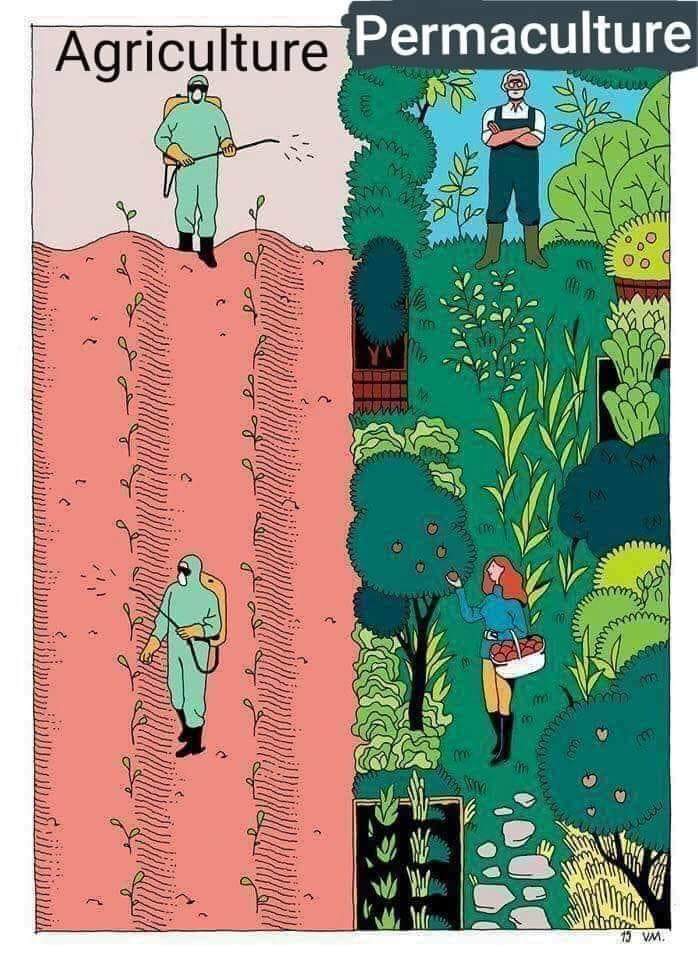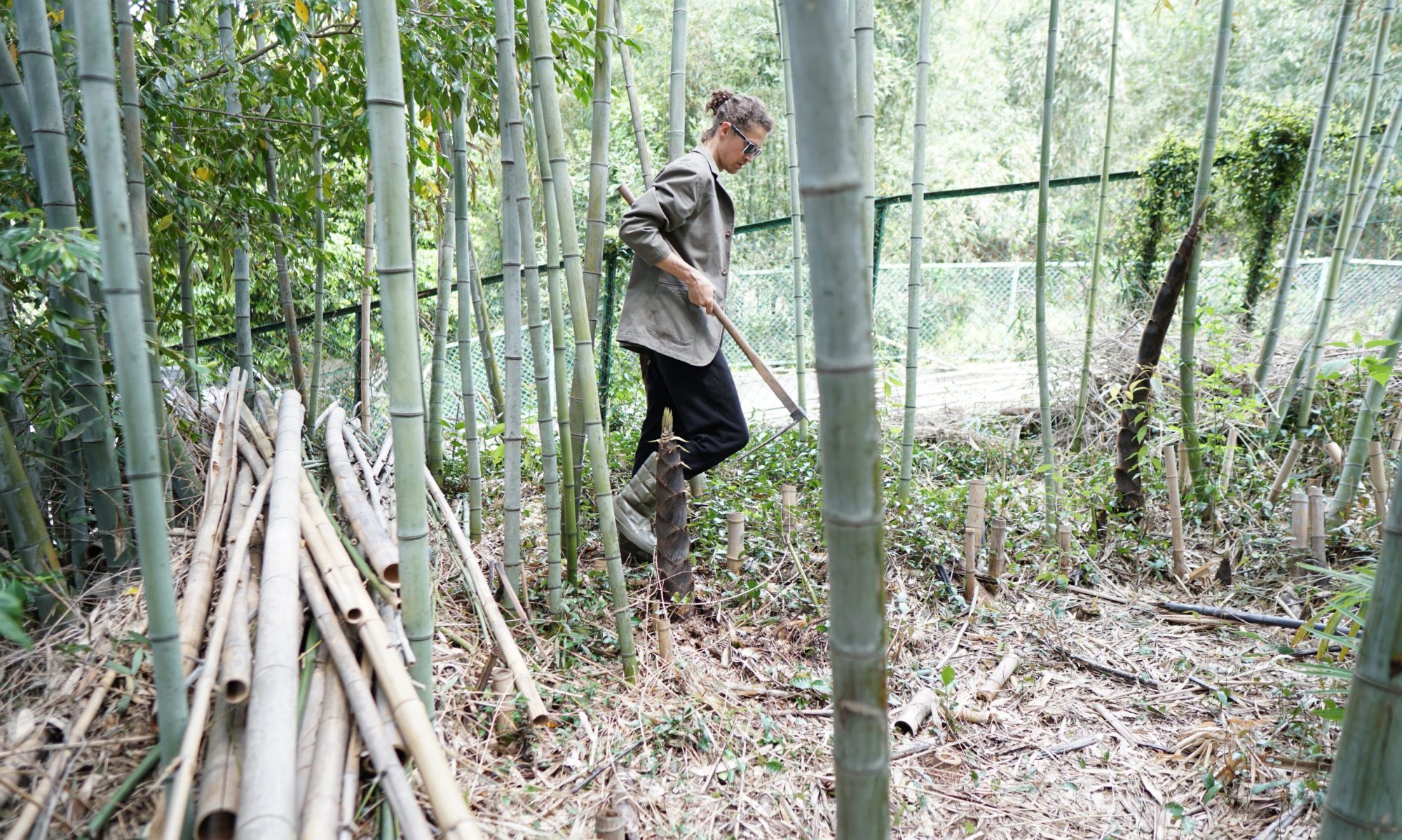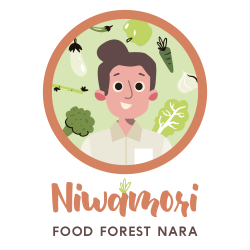An Interview with Jerome, Founder of Niwamori.org: Exploring the Beauty and Benefits of Food Forestry
In this captivating interview, Leilani engages in a conversation with Jerome, the visionary behind Niwamori.org. Jerome shares his inspiring journey of transforming his traditional Japanese house and vast land into a thriving food forest.
Discover the essence of permaculture, the magic of moon calendars, and the art of living in symbiosis with nature. Jerome invites people from diverse backgrounds to join him in this sustainable farming revolution and embrace the joy of growing their own food. Step into the world of Niwamori and unlock the secrets of harmonious coexistence between humans and the natural world.
Leilani: Could you start by introducing yourself and, and your forest farm?
Jerome: Okay. So this project, is called niwamori. org. It was started, about four and a half years ago, five years ago.
And, it’s like a permaculture, and natural farm, and, moon calendar type of, place. We have, planted maybe 30 or 40 types of different, new fruit tree around the house. Before that it was just, a traditional Japanese house with, a lot of land and Japanese garden. And then, since I moved here, I decided I’m going to turn big part of it into a food forest.
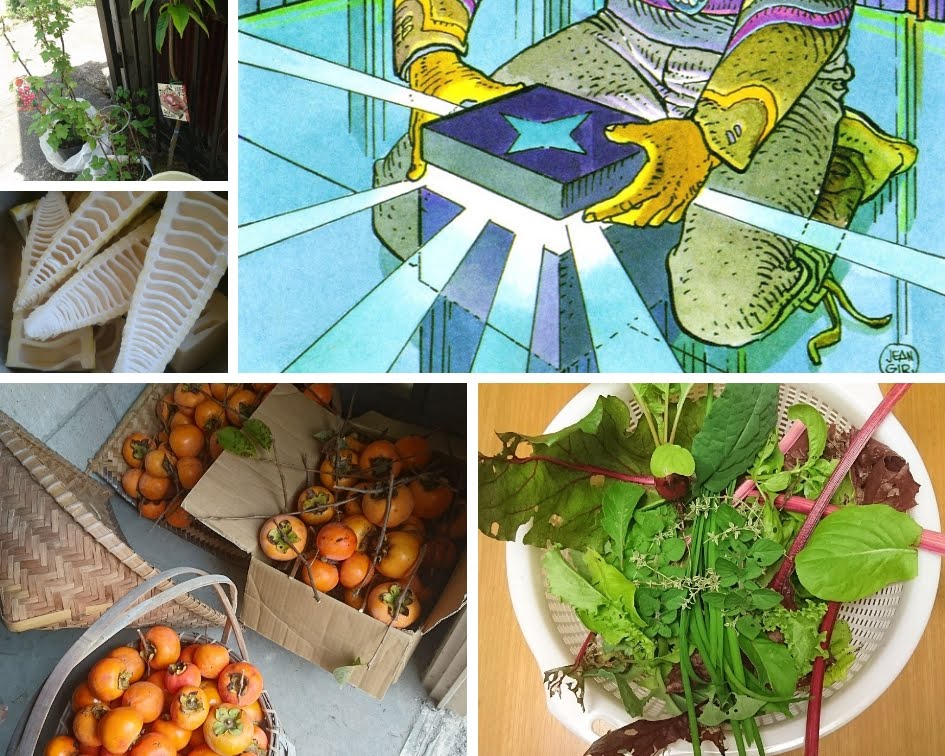
And, well, the food forest, is a way to make a lot of food all year long. And it depends the season. So you plant many things and then, after it’s planted, it’s a constant monitoring of, what is getting ready to harvest. And then so, there is also the joy of going around and, not being sure what you’re going to get today.
But there is always something available. And, some plants, arrive at the end of their life cycle when it’s an annual. And then you have to take that into account, and you cut it, and then you mulch it, and then you help it. Maybe you put it under another tree, another, thing that is fruiting at the moment.
And it’s a constant recycling of carbon. I call it, a live carbon, for people to understand what’s going on. So, uh, another plant will benefit, or, bacterias and mushrooms that are living under it, will benefit from… processing this, carbon that is not dry, that is still full of water, still of, alive juices.
And, it’s turning into fertility instantly. So, the difference of my garden and most of my neighbor’s garden is when my neighbor’s tree getting too big, they ask for somebody to come over and, cut the tree. And then all this organic matter is taken away because they’re not willing to put a compost pile anywhere.
They’re not willing to do anything with that. But in my garden, on the contrary, everything is recycled, instantly. Sometimes right under the tree. So the way I see, my garden and the way I see how, the nature functions is, uh, very similar to, the magnetic field. So you will find this shape in the shape of an apple.
Or you will find this shape around the Earth. The magnetic field is always looking the same. And it’s also the shape of a tree with the branches going up and the roots coming underground. It’s also the same magnetic field. And so every plant that grows like that, like a tree, trying to find the sun and everything.
It’s creating all this organic matter and it’s a micro center of gravity and it’s working very hard to create all this organic matter. And then as a gardener, you have to visualize that and you have to understand that whatever is happening around that tree, it’s supposed to be a symbiosis. The humans are the only creature on Earth that can visualize that and can work towards that.
Contrary to other animals, that, are doing it in a kind of chaotic way, eating and browsing and spreading seeds randomly, for most of them. The humans, they can visualize that and they can apply some kind of systematic pattern, in the middle of science and art. And they can, enhance all life in the garden.
And I think, actually, the humans original mission is like that, you know? Like, some religions say it’s the gardener of the Eden garden, or things like that. But it’s just a way to visualize it. Humans actually have been doing some kind of food forestry before they got stuck into the industrial revolution, and the agriculture, that you can say in traditional agriculture patterns.
Uh, if you look at the Amazon, for example, for as long as humans have been roaming around, everywhere where there was a human settlement, there is always a biodiversity explosion. And why? It’s because humans have tendency of gathering seeds and different things from around the forest, and wherever they gather, they eat it, and then they spread the seeds around, and then…
A food forest is growing. So, I think if we connect to that and if we start to vibing and understanding what we can do then around each house you can grow some kind of food forest. Even if you have a traditional garden and you just look at it seriously and then you can start to grow maybe asparagus or strawberry or garlic chive, that’s a really good one also.
Many plants you can plant under the trees that you have that are not producing fruits and that will give you food every year. And then, if you come here in Niwamori, I can teach you all of these things. I can also host if you just wanna look at it. we have a website, you can go check later, niwamori. org. And, basically depending what you’re interested in, You can stay here between half a day to a couple of months if you are dedicated and if we have a good chemistry. I’m also looking for people to move around my neighborhood to emulate this way of gardening or interacting with nature. So that more and more people can learn how to do that.
Another thing that, is different, between my garden and another garden is I almost don’t use any product from outside my garden. So, sometimes if a tree or bush looks not so healthy, I will give him, a boost in a form of fermented, vegetable solution concentrated. I make, my own compost water, which is also very useful.
So, I can sip all my weeds in water and then use it again after to water a plant that I want to give the minerals to. So, there are many options that you can use, so that you don’t have to use all the industrial products. So, I think, around the world, we are arriving to a point where, The way of farming has to be completely re taught, and the programs of the young farmers have to be changed, because tilling, for example, is a very big mistake.
If you look at the earth of a garden, the reason why people say they are tilling is because they want to make it more fluffy, or more open, aerated, or whatsoever. But why? Because in the beginning it was, just before it was compacted. And why is it compacted? It’s because the soil is, very often, void of anything growing on it.
So they, they grow something, they cut all of it, and then it’s bare, and then it gets compacted. Because there is no root, there is nothing to maintain, some kind of, network inside the ground. And so, if you want to do sustainable agriculture, you always need to have a ground cover.
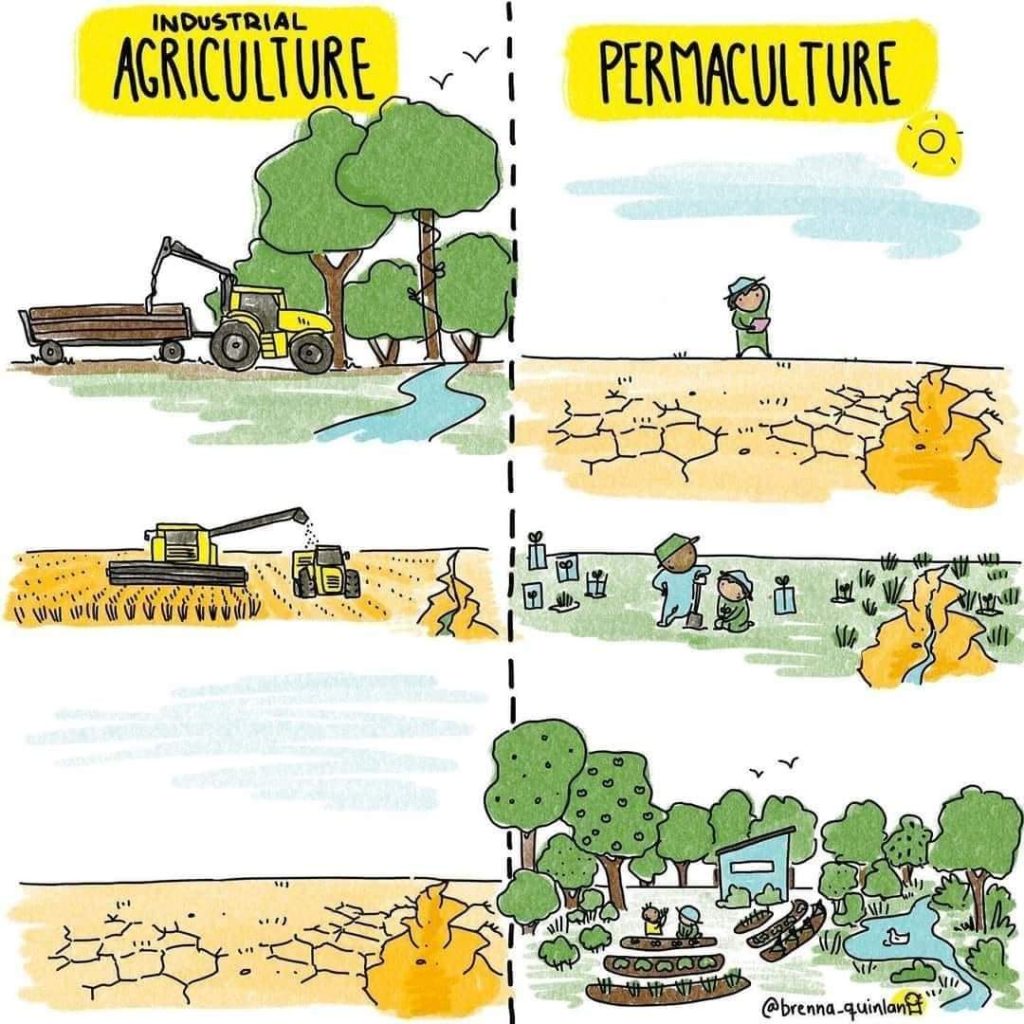
And then, when you want to plant something else, at that spot, maybe you can take out the, whatever ground cover was there. It can be clover, it can be vetch, or different kind of plants. And then, in this way, the soil is always covered, and the plants that are living on it are always pumping sugars in the ground.
feeding bacteria, feeding mushrooms, the network of life, the internet of plants, which are, the mushroom network. And then, you have fertility. If you start tilling, you destroy, you kill your soil. Like a soil is a stomach. So a stomach that, is digesting anything you put on it. So if you have time, you put a big branch.
And you make a hugelkultur, or you make something, you make a stack of different things to start to rot on the top. And then, don’t worry, all the, the mushrooms and all the earthworm and all the bacteria will start to come and digest it slowly, slowly. And then at some point, when, this stack is a little bit more fluffy and start to look like earth, you can plant in it.
So you don’t have to till. Don’t till. And then if you don’t have to till, you don’t have to buy a machine. If you don’t have to buy a machine, you don’t have to buy oil. And then, everything gets better. The most, productive food forest, when you walk around, you’re actually not sure where you should walk, because, you’re gonna kill something.
But that’s also part of the cycle. You walk on something, okay, this thing gets compacted. It creates a nutriment for another plant that is beside, that you like, you want to eat more. Or maybe you’re purposely walking on something that is already past a harvest time, and then it gets composted right there.
So you have to imagine a food forest when it’s planted on the seven layers. So with the big trees, the small tree, the bush, the grass level, the ground covered the root level. And then, the plants that are climbing inside the other bigger trees. Then, it’s lush. There is grow thing growing all around.
And then, it’s very satisfying to look at, to taste also. Every time I go in my food forest, I always end up tasting a few things along the path. And then, it’s the experience of communion with nature and it’s really relaxing, it’s good for the brain, it’s good for the, interior peace, so you should try it.
Find someone that does permaculture or food forestry around your place and go visit, ask questions. You can start with very small things like planting a strawberry in your garden. And then next year you get strawberry. And then you will be hooked. Then you want to plant something bigger. And bigger.
And something more interesting. Maybe a fruit tree or something. I think people should gift each other trees, for example. And if you don’t have space, because that’s a big problem, because you live in Babylon, well, you can consider leaving. You can go outside of the big city. Or you can start a plant at your home in a pot.
And then when it’s time to plant it, you have a friend who has a garden, or a nanny, or anybody that you know that has a garden, he will be happy to take the plant and grow it for you. And then when it’s ready, he will call you, come taste it. So everybody, even someone has just a little window with a little bit of south facing light in the city, they can contribute to grow the food forest.
You can have a plant in your house growing to a certain point. And then. You create your community, you make your friendship bigger by sharing these plants with someone. Something like that. If you come to Niwamori, you will hear a lot of birds, you will see some, animals, insects mostly that you probably never seen before.
We try to have a balance of things. So, yes, there will be dragonfly. Why there is dragonfly? Because they have something to eat. If you spray all your trees, then you will not get dragonfly. We have different seasons. So, like, popular seasons, the cherry blossom season, because there is a big cherry blossom in the garden. So… There is beauty to look at and there’s also things to eat. And then, what I think, people should try to find is, this balance. You can maybe live in the, in the city and then come regularly on the countryside to help someone grow their food forest.
Then they will give you free vegetable. And then that will be your decompression time. Or you can do reverse. You can live in the countryside like I do. It’s just one hour from the center of Osaka, and when I want to go to the city, I just take the bus and the train, and I can go and enjoy the city.
So, when I was younger I thought I want to live in the middle of the city, like a lot of people, they think it’s convenient, etc. But, the joy of being in the nature is, in the end, is stronger, so. Something like that, you know? We have hosted about, 90 people now in the last, four years.
So, I’ve applied to the Workaway Program. There is also the Woofing Program that you can look into if you want to travel around the world and work on a food forest, or on a farm. Look carefully about what’s the mission statement and talk to the owner. Because a lot of people have you weeding all day and they don’t really talk to you.
If you are here, it’s different. I will teach you everything I can. Sometimes I’m busy, I do something else, but I try to give you a new task or a new thing to do every day. So you can learn about, cutting a tree, or, what weeds are annoying, what weeds you can leave in the garden. Because he will help another plant or different kind of things.
If you, if you like to finish the mission, if you know how to work a little bit faster than the average you think, you should contact me. I can host about three people all year long. And then I can also host about, five to six people as a paying guest in a tatami room with some art. It’s very beautiful.
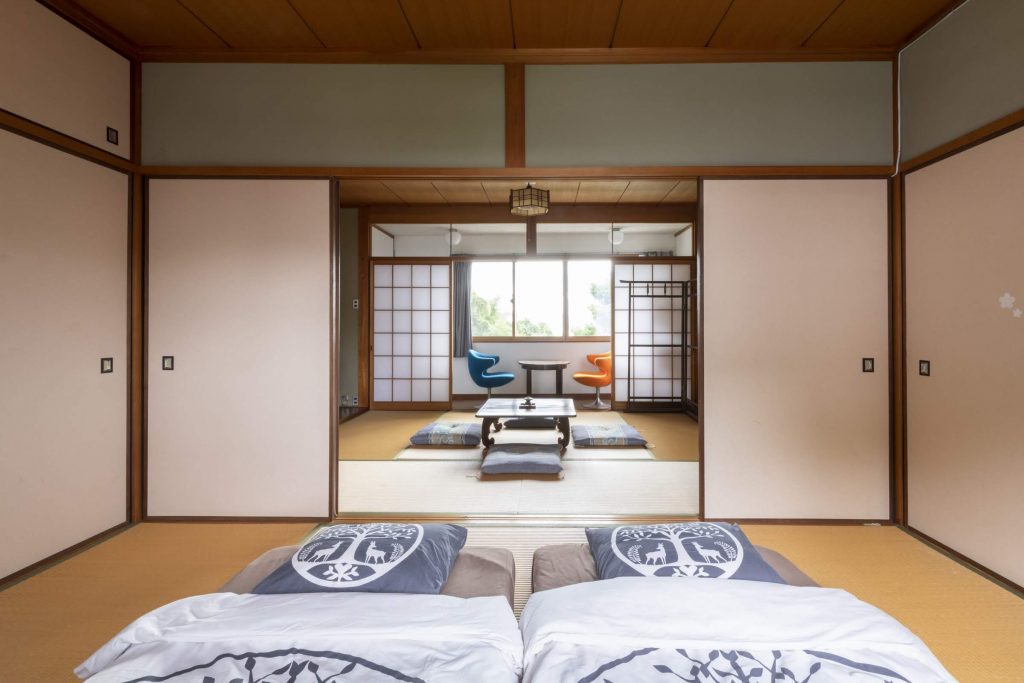
So if you just want to spend a day or two in the nature, listen to the birds, you can do that. If you want to work here for a little bit longer, I can also try to find you a house in my neighborhood if you really want to stay here. So, come visit Niwamori. Niwamori. org.
Leilani: Is there a specific kind of person that you’re looking for to come in?
Jerome: So, I’ve had, different kind of profiles coming here, and, I think that, people that usually are able to perform under pressure, like nurses, they are very good because when they are in the nature, they are in a different environment.
They are glad they are here. They’re not into the sterilized and, pressure and, difficult situation that they are usually. But then they keep their habit of being efficient and, dedicated and and trustworthy. And then these kind of people, they are my favorite, volunteers, let’s say. Also, anybody that has, experience, doing, um, some kind of garden design or something like that, I had people coming to help me and it was really, really good because I get some new ideas of which new plants I can put and, how can I make my edges, more efficient and basically new ideas like that.
People that are florists, very good also. Like florists, why? Because they are, they, they used to do bouquet. And, sometimes they do bouquet with dead branches and stuff. And very meticulous. And then when they have to cut a tree in my garden, they have the same skill, but it’s just on a bigger plant.
So, like, florists. Of course, gardeners, anybody that has experience in the garden is welcome to come here to bring back some skills or some ideas. Um, also people that are good at online thing. If it’s a website, improvement or… Taking some pictures and videos, and helping spread the word about this place is also welcome.
I won’t give them full time to do that. But, if they can spend a bit of time when they are here, to create some content to share for people, that’s good. And, people that know good vegan recipes. So, so in here, so I’m not vegan, but I have reduced my meat and fish consumption a lot in the last few years for obvious reason, because when you eat meat in Japan, it’s fed with, with corn and GMO beans that come from, a forest in Amazonia that has been burned down to grow these beans.
So Well, you can eat some grass fed beef sometimes and they do that in Japan. It’s really good quality But I I would not recommend other kind of meat. A Little bit 50 grams a day maximum If you if you really hooked to it, it’s okay but You can make very delicious food with vegetable and if you come here Basically, all the meals we have with the volunteers and at home is, is about 70 or 80% is vegan.
And, we use a lot of spices, a lot of different plants. And, it’s always really good. So, it’s not really needed. And then for the fish, everybody knows we are overfishing around the world at the moment. So, if you can reduce your consumption, it’s better. But I think the strict vegan is also wrong. And for a few reasons.
I think the joy of life is to be able to have a little bit of everything. But you also need to control yourself, yeah? Like, everything is good sometimes, but not all the time, yeah? So we cook with a lot of vegetables, of course, because we grow a lot of vegetables here. So every season there is a different menu, kind of like at the moment, we have a lot of persimmon, the Jerusalem artichoke, a lot of rucola.
We always have garlic chives, a lot of herbs. So, and my neighbor make the rice. So I make a lot of meals that are. Beside the oils and the salt and pepper, everything comes from the garden or within 200 meters. So, that’s really satisfaction for everybody and happiness. So if you know recipes and, uh meals and cakes and anything that is vegan or vegetarian and you want to come here, teach us.
Teach me, teach my wife, teach the other people here. It’s good, you know, you should apply to try to come here. But you will not be only a chef. Like, everybody wants to learn something about the garden when they come here. The missions are varied. We follow the moon calendar.
At some point, you will do some weeding, because it’s part of the thing, you know. Some people come here, and then they think they’re gonna spend their time picking fruits. That’s not what we do, it’s a joyful part of the day when we get to do it, but it’s not every day. And, there is many other things to do.
We do a lot of things with the bamboo also, if you like to work with bamboo. If you are a carpenter or somebody that has DIY skills, it’s very in need in here. If you can repair things, repair tools, repair, any part of the house. It’s a very big house here, traditional Japanese house. There’s a lot of space.
And it’s too big for me and my wife. So, if you like to live in the countryside in Nara and you’re good people and we can trust you, you can come here and, you know, there is many options to live around here together.
It’s not going to be a commune like we have to be together all the time, you know, you do your own thing, but at least help something in the garden, grow food together, then the rest of the time you do whatever you want. The scheduling here is very interesting, I think, because we only work in the morning, so During the weekday, we do four mornings every week So Monday, Tuesday, Wednesday, and Friday morning We wake up 5. 30. We start 6.30 or 6.15. We work until 12 And then you have your afternoon free, you have your weekends free So that’s good. A lot of people are happy with that compared to other volunteering jobs. Uh, yeah. And then, uh, what else we can say? You have some questions, some other questions?
Leilani: For anyone that I meet in the future who seems to fit the profile, I definitely will have this information to be able to pass along much easily. One thing I am interested in, kind of in general, especially with people who work in farming, is, um, for people who have no background in farming, when they see a farm, like, they may see, like, different fruits or vegetables, like, what action the farmer is doing, like, if there are any insects or how the weed situation is, but that’s kind of, like, it.
But as someone who works, Growing food, how do you feel when you first, like, enter kind of your space? Like, what are you looking for? What are you, like, feeling?
Jerome: Yeah. So, during the year, I think, especially in the spring and in the autumn, I feel, better than the rest of the year because there is a lot of things available for eating and in the spring, it’s like a rebirth every year.
And so I have all these different plants that are, Oh, now I have my first strawberry or my first asparagus or, I’m walking around and I’m kind of observing like a lot of times before, before acting, I don’t really know what I’m going to do during the day. I have a general idea.
Okay, today is a good moon day for planting root vegetable or for transplanting something. So I know during the day I will have to do that, for example.
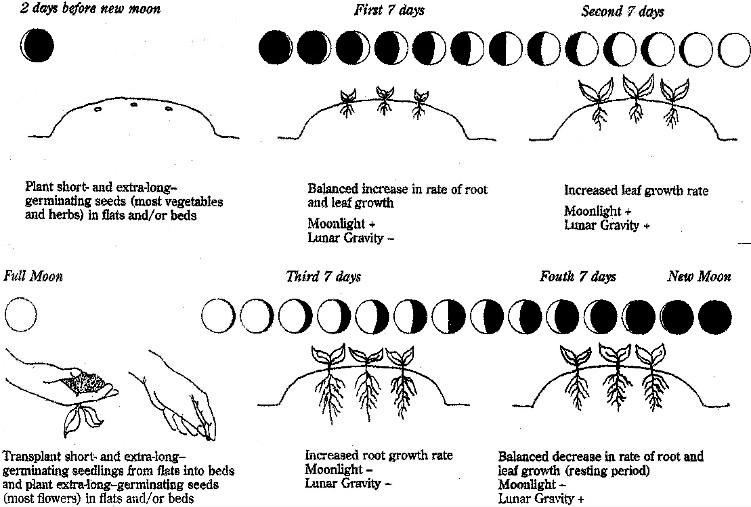
But then, if it’s a hot day in the summer, I know I don’t want to be working in the middle of the sun. So I’m, I might be going first in a part of the garden that, doesn’t have direct light at the moment. So if I need to do weeding with no above cover of a tree or whatever, I will choose that spot first. So I go in the garden, I observe, I look at what needs to be done. I try to make a little plan in my head and then with my volunteers, sometimes by myself, but I like to work with people better. And I get the feeling of, okay, so this plant needs help. This plant is dying, well, it’s time to cut it. I go around and, there is a lot of happiness of just being able, okay, I’m working on something, but just I turn around, I grab a leaf of rucola, I munch on it or something.
One of my original objective when I started the food forest, I thought maybe when I’m resting I can just lay down and then when I wake up, I’m a bit hungry, I just grab the first leaf that goes through my hands and I can eat it. And so I want to make a little paradise like that where everything is edible and I don’t have any danger of eating a toxic something or, you know.
Well, there is some Narcissus in my garden, so be careful, don’t eat the Narcissus, it’s very deadly. What I like also is, it feels safe for example, compared to another garden, people that are doing rows and stuff, if anybody comes into the garden hungry, they will be able to steal everything.
Whereas in my food forests, most of the plants, they have no idea what it is. And so, if anybody comes and tries to rob me of my food, they will find the most obvious one, but I will always have something to eat. So, I think, with the turbulent times that might be coming, It’s also a good idea to do this kind of design because It’s kind of safe and then you have always something to eat and like some of my plants they grow underground But nobody knows how it looks, how the top looks like Most people don’t know how a potato looks like also the plant so it’s kind of these kind of things I think I want to encourage people to to learn about it and do it and For example, the satisfaction of pulling your own carrot or your own potato the first time is amazing.
It’s something everybody should be able to do. Like, plant a potato, wait a few months. It’s very easy plants. Sometimes you need to water, but… Most of the time I don’t water in my garden. And then I harvest. And, and a potato that has, a okay ground, and you add enough mulch on it, it goes times ten. And then you can multiply and multiply like that.
So, when I work in the morning, I like to work with other people, because I like to share, and then, you know, and ask what people think, and I want to train people to know how to do these things by themselves or so. Like during the last two years, there was not so many people visiting.
And, my motivation was not as high because, I think when you grow something and you’re gonna eat it together, it’s much better than eating it by yourself. It’s like when you go to a restaurant by yourself, there’s no joy, or so few. But if you can look at the person enjoying it with you, then that’s the best, you know?
So, I think doing this kind of project with somebody else also is important. You see, if you are in couple, it’s important that your significant other takes part in some part of it. Like, my wife, for example, she doesn’t really… Want to help in the garden, but she’s always okay to help me do a jam or a cake or Cooking whatever I bring during the day.
So You know, you can make a tandem. I take care of the outside. She take care more about the inside of the house it’s a balance the humans between each other and the human between with the nature you can find that if you grow a little bit of a garden forest or You don’t even have to plant a tree, you know?
You can plant like bushes, bush layers only. Something that will grow to 80 cm or 1 m high. And then around it, Kales, and carrots, and whatever you like, just do some research. There is many things available on YouTube. That’s how I get all, most of my information. I follow a few channels, like James Prigioni, for example.
It’s a really good one. And then, an important part also when you start somewhere, if the soil is very bad, if it’s very compacted and crappy is to put wood chips on it. So you can contact your neighborhood.
Maybe the town hall is good. You call them, where can I get woodchips? And then usually they will tell you which place in the closest from your house you can get woodchips. In my case, in Nara, they are composting it and they are using it for other purposes. So I can get it for free. But some other region in Japan, they have the very bad idea to burn everything.
So they burn all the biomass, to make electricity. Such a waste, but that’s what they do. And then you cannot get the wood chips in this case. But, many places around Japan you can get it for free. So, get some wood chips. If you can get it delivered or go there with a kei truck or something. Get a few cubic cubic meters and then 20 centimeter to 30 centimeter everywhere and then you wait Then during that time you buy your seeds you prepare for next season.
You make a little calendar you try to Figure out how you’re gonna plant what you’re gonna plant You can plant your tree already or your bush In this soil with the wood chip around it Making sure it doesn’t touch the trunk, so the trunk doesn’t get rotten. But all around the tree and all around the bush, you can let the wood chip rest, and start, to decompose.
And then after six months, you plant in it. Depending how much rain you got, and how much soil activity you had under, then it will become very dark, fluffy ground, and you can grow everything inside of it. So, if you want to start something… on a soil that looks not so good. Don’t go there and plow it and try to plant seed into it.
That’s what I did the first time. Nothing grows. You want to have a soil that is alive with a lot of carbon that is dark. The more carbon matter, the better. And then it grows. It grows very well. So that was for my little gardening advice. So, I hope, uh, you have a good day. And, uh, if you want to come to Nara, you can come here.
You contact me. We also have, the information on Google Maps. If you type Niwamori, you can find us, probably, in Nara. And, there is a phone number there, and then… Yeah. Try to grow something at home!
